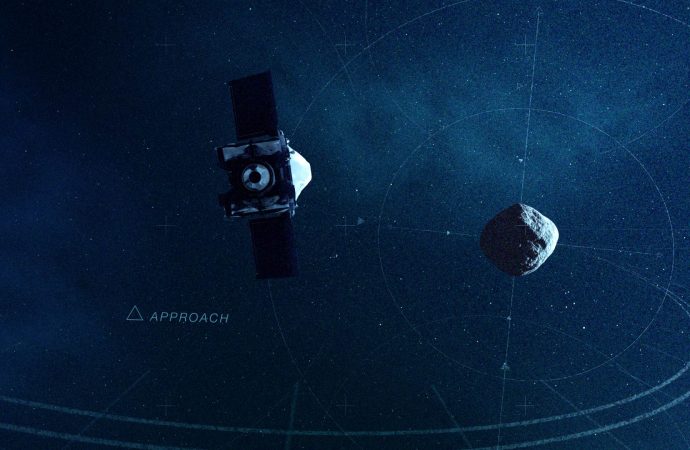After an almost two-year journey through space, NASA’s Origins, Spectral Interpretation, Resource Identification, Security-Regolith Explorer (OSIRIS-REx) caught its first glimpse of Bennu, a carbonaceous asteroid whose makeup may record the earliest history of our Solar System, last week and began the final approach toward the asteroid. Using its multipurpose PolyCam camera, the spacecraft obtained the image of Bennu from a distance of 1.4 million miles (2.2 million km), or almost six times the distance between the Earth and Moon.
OSIRIS-REx, led by the University of Arizona’s Lunar and Planetary Laboratory, is the first U.S. mission to retrieve a sample from an asteroid and return it Earth for study. The material it returns will be the largest sample brought back from space since the Apollo era.
The spacecraft has traveled approximately 1.1 billion miles (1.77 billion km) since its September 8, 2016 launch, and is scheduled to arrive at Bennu on December 3, 2018.
“Now that OSIRIS-REx is close enough to observe Bennu, the mission team will spend the next few months learning as much as possible about Bennu’s size, shape, surface features and surroundings before the spacecraft arrives at the asteroid,” said OSIRIS-REx principal investigator Professor Dante Lauretta, of the University of Arizona.
“After spending so long planning for this moment, I can’t wait to see what Bennu reveals to us.”
To boost itself onto Bennu’s orbital plane, OSIRIS-REx performed a slingshot maneuver, or gravity assist, around Earth 11 months ago.
The spacecraft is now zipping along at almost 32,000 mph (51,500 km per hour) relative to Earth, while catching up with Bennu at a little over 1,200 mph (1,931 km per hour) relative to the asteroid.
“Right now, Bennu just looks like a star, a point source,” said Dr. Carl Hergenrother, a scientist at the University of Arizona’s Lunar and Planetary Laboratory and leader of the OSIRIS-REx astronomy working group.
“That will change in November, when we will begin detailed observations and we’ll start seeing craters and boulders. You could say that’s when our asteroid will transition from being an astronomical object to an actual geological object.”

On August 17, OSIRIS-REx spacecraft obtained the first images of its target asteroid Bennu from a distance of 1.4 million miles. This cropped set of five images was obtained by the PolyCam camera over the course of an hour for calibration purposes and in order to assist the mission’s navigation team with optical navigation efforts. Bennu is visible as a moving object against the stars in the constellation Serpens. Image credit: NASA / NASA’s Goddard Space Flight Center / University of Arizona.
After arrival at Bennu, OSIRIS-REx will spend the first month performing flybys of Bennu’s north pole, equator and south pole, at distances ranging between 11.8 and 4.4 miles (19-7 km) from the asteroid.
These maneuvers will allow for the first direct measurement of Bennu’s mass, as well as close-up observations of the surface.
These trajectories will also provide the mission’s navigation team with experience navigating near the asteroid.
“Bennu’s low gravity provides a unique challenge for the mission. At roughly 0.3 miles (500 m) in diameter, Bennu will be the smallest object that any spacecraft has ever orbited,” said OSIRIS-REx project manager Dr. Rich Burns, of NASA’s Goddard Space Flight Center.
OSIRIS-REx will briefly touch Bennu’s surface around July 2020 to collect at least 60 grams of dirt and rocks. It might collect as much as 2 kg.
It will then pack the sample into the Sample Return Capsule and travel back to Earth, dropping the capsule into Utah’s west desert in 2023, where scientists will be waiting to collect it.
“The story of this asteroid is the story of the Solar System. When we understand Bennu, we will understand something fundamental about our Solar System,” said Dr. Bashar Rizk, of the University of Arizona’s Lunar and Planetary Laboratory.
Source: Sci News

































Leave a Comment
You must be logged in to post a comment.